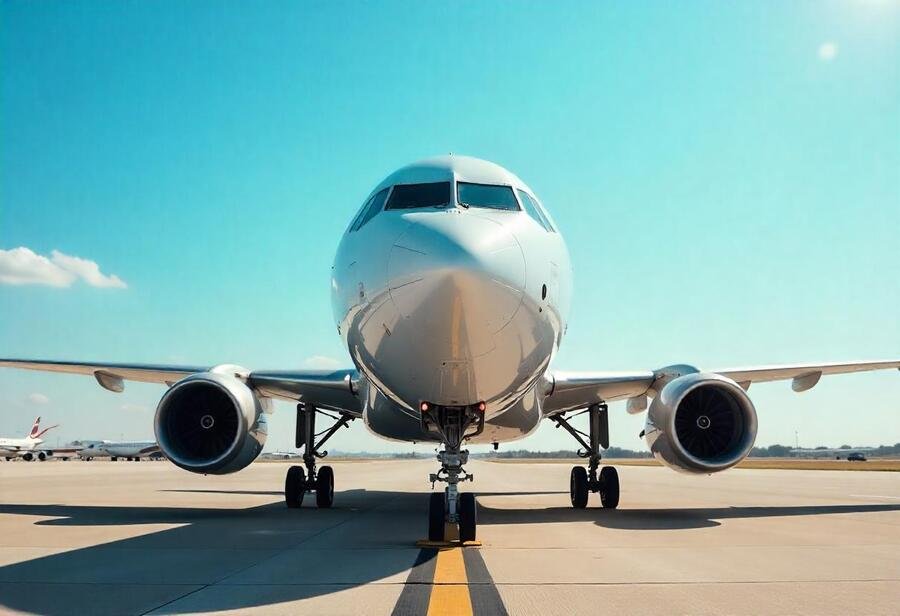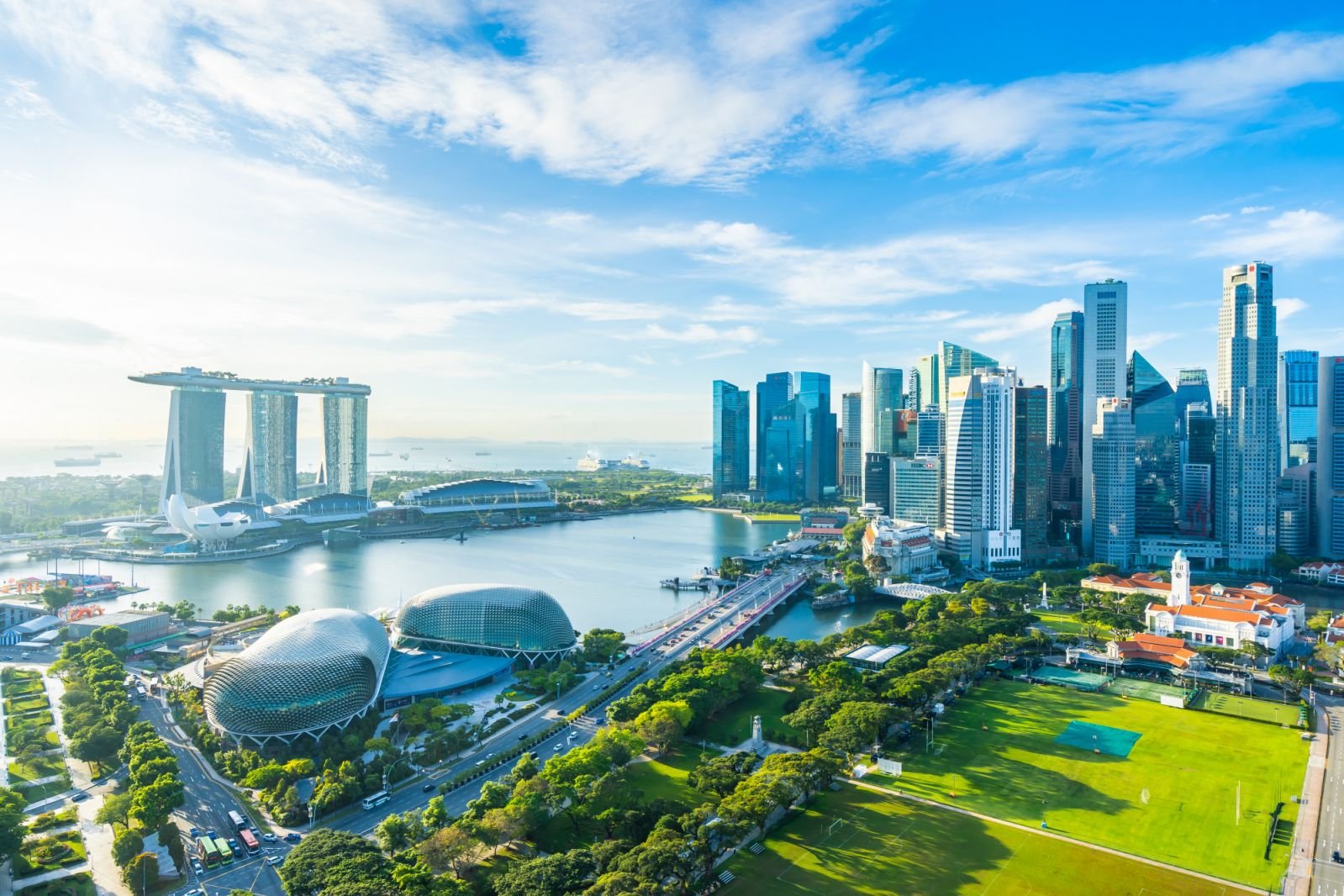Asia Travel Pulse
Halong Bay Tragedy: A Sudden Storm Claims The Lives Of Thirty Seven Tourists And Crew Members – What Went Wrong in Vietnam’s Popular Tourist Destination?

Sunday, July 20, 2025
In a tragic incident, a tourist boat with 48 passengers and 5 crew members capsized on July 19, 2025, near Ti Top Island in Halong Bay of Vietnam reckoned as a majestic and popular natural world wonder in Southeast Asia. Without warning, the unexpected disaster caused 37 deaths and 10 survivors. It is a tragedy that has stunned the local community – and the global tourism industry – and prompted serious questions over safety regulations around maritime tours in the blue waters of Halong Bay. Well-known for its calm waters, towering limestone islands and picturesque scenery, Halong Bay has for decades been a top destination for international tourists. pyt Many visit relatives of Vietnamese descent, And their death is a grim incident haunting the idyll of the pensive lagoon, The mountain, the river, and the cataract, The cattle, the cliff, and the rustling trees. The tragedy is shedding light on the difficulties of tourism’s push-pull between providing popular travel experiences and safeguarding those who take the road less traveled safely.
The boat flipped over around 13:45 local time (21:45 GMT) on Thursday on what was meant to be a regular sightseeing trip. Most of the passengers on the boat, had been families from Hanoi, and more than 20 of them were children. Try as they might, however, the good ship was overtaken by a thunderstorm and what had been calm seas became a tumultuous ocean. The strength of the storm capsized the vessel in the world-famous Ha Long Bay World Heritage Site. By early July 20, the tally of the dead had reached 37 and the search for bodies continued.
This tragedy is having a deep impact. It has been a shadow on the image of Halong Bay as one of the most attractive destinations of Vietnam, prompting local authorities to reconsider the safety of the maritime tourism industry there. The incident also raises questions about regulation, weather safety and the response of authorities in one of the most traveled areas of the country.
Halong Bay: A Global Natural Treasure
Halong Bay, located in Quang Ninh Province, northeastern Vietnam, is often referred to as one of the natural wonders of the world. With over 1,600 limestone islands and islets, many of which are uninhabited, the bay is a UNESCO World Heritage Site, celebrated for its majestic beauty and serene landscapes. The site’s popularity has been bolstered by its unique geographical features, which are the result of millions of years of geological processes. These towering rock formations, with their caves, grottoes, and lush forests, provide a dramatic backdrop for cruise tours, kayaking, and sightseeing. Halong Bay has also become a favorite location for filming movies and documentaries.
While the beauty of Halong Bay has made it a symbol of Vietnam’s natural grandeur, it has also attracted an overwhelming number of tourists. In recent years, the tourism industry has seen exponential growth, with boat tours being one of the most popular activities for travelers. However, the increase in the number of visitors has led to growing concerns over the environmental impact of tourism, as well as the adequacy of safety regulations and infrastructure to accommodate large numbers of people.
The Tragic Incident: A Day of Horror for Tourists
The ill-fated voyage aboard the Vinh Xanh 58 tourist boat was meant to be a picturesque afternoon tour of the bay’s stunning landscape. The boat, carrying mostly families, departed from the mainland to explore the serene waters. Among the passengers were over 20 children, the youngest of whom was only three years old. The oldest passenger was 53, a reminder of the diverse group of tourists who come to Halong Bay seeking relaxation and adventure.
At approximately 1:45 PM local time, a sudden and severe thunderstorm caught the boat off guard. While storms in Halong Bay are not uncommon, the rapid onset of this one left little time for preparation or evacuation. With little warning, powerful winds and heavy rain overwhelmed the boat. The boat, which was likely not designed to withstand such sudden weather conditions, capsized in the choppy waters of the bay. Many passengers were thrown into the water, while others remained trapped inside the overturned vessel.
The swift response of local authorities, including the Vietnam Coast Guard, meant that rescue operations began almost immediately. However, the challenge of navigating Halong Bay’s waters and strong currents made the operation extremely difficult. As the search continued throughout the night, divers recovered the bodies of 37 individuals. Four of the victims’ identities remain unverified, highlighting the scale of the disaster and the difficulty in identifying the deceased in such conditions.
The Response: Swift Actions in the Wake of Disaster
Following the tragic incident, the Vietnamese government moved quickly to coordinate search and rescue operations. Prime Minister Pham Minh Chinh issued an urgent dispatch on July 19, directing the Ministry of National Defense and the Ministry of Public Security to mobilize all available resources. Local authorities in Quang Ninh Province, aided by search teams and rescue divers, worked tirelessly to recover the bodies and assist the survivors. As of July 20, 10 people had been rescued from the waters.
The boat, which was salvaged and towed back to shore, was examined for further investigation. While the cause of the incident is yet to be definitively determined, there has been much speculation that the storm’s sudden onset played a significant role. The weather conditions that day, while unusual, are not entirely unpredictable for the region, raising questions about the preparedness of both boat operators and tourists. Vietnam’s National Center for Hydro-Meteorological Forecasting has indicated that the heavy rainfall was not due to Typhoon Wipha, which was affecting other parts of the region, but rather to localized wind patterns.
Safety Concerns and Regulations for Maritime Tourism in Vietnam
This tragic event brings into focus the growing concerns over safety measures for tourist boats in Halong Bay. While the region has taken steps in recent years to improve safety protocols, such as requiring life jackets and emergency equipment for passengers, the unforeseen nature of the storm reveals significant gaps in readiness for sudden weather shifts. Although boats operating in the bay are generally required to follow certain safety standards, these measures often fall short in the face of unpredictable natural conditions.
The Vietnamese government and local authorities have long acknowledged the importance of maintaining rigorous safety standards in Halong Bay’s tourism industry. Operators are required to ensure their vessels are up to code, with qualified crews and appropriate safety gear. In addition, the introduction of weather monitoring systems has helped alert boat operators to incoming storms. However, the recent capsizing suggests that these measures may not be enough to prevent accidents, particularly in the face of sudden, intense weather changes.
It is clear that more attention needs to be given to ensuring boats are equipped to handle these challenges, and that operators are well-trained in how to respond to emergencies in real time. Additionally, passengers may need better awareness about the potential risks involved in maritime tourism, particularly in regions with unpredictable weather patterns.
Halong Bay’s Tourism Industry: Impact and Future
The impact of this tragedy will undoubtedly reverberate through Halong Bay’s tourism sector. Vietnam’s tourism industry has seen a steady increase in visitor numbers over the past decade, with Halong Bay being one of the country’s biggest draws. However, the capsizing of the Vinh Xanh 58 boat will likely lead to a temporary decline in visitor confidence, especially in light of concerns over safety.
Experts predict that the immediate aftermath of this tragedy will include an increased focus on safety reforms. Local authorities may implement more stringent regulations for maritime tourism in Halong Bay, including better weather forecasting and faster response times for emergencies. There is also likely to be an emphasis on training for boat operators, ensuring they are well-versed in handling difficult conditions and emergencies.
While such incidents can shake the confidence of tourists, the allure of Halong Bay’s natural beauty is unlikely to diminish in the long term. The region’s unique landscapes and cultural significance remain a key draw for travelers from around the world. In the wake of this tragedy, it is anticipated that Halong Bay’s tourism industry will emerge stronger, with improved safety measures in place to protect future visitors.
Conclusion: A Devastating Reminder of Nature’s Power and Safety Imperatives
The capsizing of the Vinh Xanh 58 boat in Halong Bay is a tragedy that will be remembered for years to come. It serves as a powerful reminder of the unpredictable nature of weather, particularly in maritime environments. While Halong Bay’s natural beauty continues to captivate travelers, this event underscores the need for heightened safety measures, more effective emergency response systems, and better weather preparedness for tourist boats.
As the recovery operation concludes and investigations continue, it is hoped that lessons will be learned from this disaster. The authorities must ensure that such a tragedy never occurs again, and that Halong Bay remains a safe and welcoming destination for tourists in the years ahead.
Asia Travel Pulse
Hotels Transform into Immersive Art Galleries Across Asia

Monday, July 21, 2025
Luxury hotels across Asia are increasingly turning into vibrant art galleries, providing guests with unique cultural experiences through diverse artistic presentations. From preserving traditional arts recognized by UNESCO to contemporary interpretations of cultural landmarks, these hotels offer art enthusiasts remarkable journeys into local heritage.
Vietnam’s Culture Captured in Oil Paintings
The Anam Mui Ne, opened in early 2023, showcases Vietnam’s vivid cultural tapestry with over 250 exclusive oil paintings created by distinguished Vietnamese artists. Featured prominently within guest rooms, corridors, and common spaces, these artworks illuminate scenes from everyday Vietnamese life. Renowned artist Bui Van Quang, celebrated for capturing local customs and daily routines, and Vu Trong Anh, noted for his abstract landscapes, are among the contributors. Complementing these paintings are traditional pottery artifacts by the Cham people, a practice identified by UNESCO as intangible heritage urgently needing protection.
Artful Exploration in Hong Kong
At The Hari Hong Kong, guests can embark on a curated art journey through the hotel’s extensive art collection and the vibrant Wan Chai art district. The hotel’s “Hari Art Trail,” guided by resident artist Bibek Rai, introduces visitors to eclectic art forms including installations, surreal photography, graphic paintings, and digital artwork, all selected by London-based advisory A Space For Art. Post-tour, guests can explore local creative hotspots, including the Foo Tak Building and the exclusive PHD Group gallery.
Chiang Mai’s Celebrated Umbrella Artistry
Paying homage to Chiang Mai’s iconic Bo Sang Umbrella Village, Meliá Chiang Mai adorns its signature Mai Restaurant and Bar and executive The Level Lounge with elaborate umbrella-themed art. Intricate ceiling installations resembling umbrella frames, along with wall-mounted textile artworks created from traditional Chiang Mai materials, blend local heritage with contemporary aesthetics. Subtle colors like amber, periwinkle, and gray create a tranquil yet striking atmosphere.
Abstract Bangkok in Bold Art Forms
INNSiDE by Meliá Bangkok Sukhumvit offers guests an artistic reinterpretation of Bangkok’s famous landmarks. At the hotel’s breathtaking 34th-floor infinity pool, abstract renditions of the renowned Giant Swing make a spectacular visual backdrop. Artistic expressions throughout the hotel reference prominent structures like the Rama VIII Bridge and traditional kite-flying activities at Sanam Luang. Additionally, artistic photography and architectural designs within the hotel incorporate traditional motifs from Wat Phra Kaew, including gold-leaf adorned decorative elements.
A Gallery Dedicated to Wellness
TIA Wellness Resort in Vietnam introduces a new dimension to relaxation by integrating an innovative art gallery into its wellbeing-focused offerings. Opened in May, the gallery features 32 exclusive artworks that complement the resort’s Zen Splash philosophy. French photographer Jeff Courdrec’s analog images and Hoi An-based calligrapher Nguyễn Xuân Sinh’s ink creations highlight creative self-expression and emotional balance, aligning seamlessly with the resort’s holistic wellness approach.
Tokyo’s Grand Artistic Display
Tokyo’s prestigious Palace Hotel features over 700 pieces of artwork, blending historical heritage with contemporary aesthetics. Art Front Gallery, responsible for curating and installing these pieces, provides guided tours highlighting the narratives behind selected works. Guests explore artworks inspired by Tokyo’s dual identity: the historic grandeur of the Imperial Palace grounds and the energetic urban pulse of the Marunouchi business district.
Historic Portraiture in Vietnam
Azerai La Residence in Hue, Vietnam, uniquely presents portraits of all thirteen Nguyen Dynasty emperors, who ruled the country from 1802 to 1945. This exclusive collection is the only known gallery in Vietnam to feature all thirteen emperors together, offering guests deep insights into Vietnam’s regal heritage. Located near historical landmarks like the Citadel and Perfume River, the gallery serves as a cultural gateway for guests exploring the city’s imperial past.
Cambodian Artistic Legacy in Luxury Hotels
Cambodia’s renowned heritage hotels, Raffles Hotel Le Royal in Phnom Penh and Raffles Grand Hotel d’Angkor in Siem Reap, frequently showcase contemporary Cambodian art. Recent exhibitions featured works by acclaimed artists like DinArt and Ramya Chuon, reflecting Cambodia’s vibrant culture and the iconic Apsara dance tradition. These exhibitions, displayed throughout hotel restaurants and public spaces, emphasize the fusion of artistic expression and luxury hospitality.
Birdlife in Focus at Angsana Lang Co
At Angsana Lang Co in Vietnam, art merges with nature conservation in the Birds Sanctuary Photo Gallery. Featuring works from local photographers, this open-air exhibition highlights regional bird species and biodiversity. Part of the resort’s “Stay for Good” initiative, the gallery invites guests to engage deeply with the natural environment and participate actively through guided birdwatching experiences and photographic contributions, bridging environmental awareness with artistic appreciation.
Tags: bangkok, California, Cambodia, Chiang Mai, cultural experiences Asia, Hong Kong, hotel art galleries, Hue, Los Angeles, santa barbara, Tokyo, Vietnam, Vietnam art
Asia Travel Pulse
China Endures Direct Hit As Typhoon Wipha Submerges The Philippines And Forces Massive Shutdowns Across Asia

Monday, July 21, 2025
China and the Philippines are facing widespread devastation after Typhoon Wipha tore through the region, bringing torrential rains, violent winds, and massive flooding that have crippled transportation and forced tens of thousands from their homes. As the storm made landfall in China’s Guangdong province following days of intensified monsoon rains in the Philippines, flights were grounded, roads submerged, and entire communities displaced. The severe impact has paralyzed regional travel and triggered emergency response operations in both nations, marking one of the most destructive weather events in recent months.
Typhoon Wipha Makes Landfall in Southern China, Disrupts Travel and Forces Mass Evacuations Across the Region
Typhoon Wipha made landfall on the southern coast of China in Taishan, Guangdong province, on Sunday evening, triggering widespread disruptions across Hong Kong, Macau, southern China, and the Philippines. The storm affected regional air travel, public transportation, and residential areas, with authorities responding by issuing high-level weather alerts and initiating large-scale emergency procedures.
At approximately 5:55 p.m. local time on Sunday, Typhoon Wipha reached the coastline in Taishan. The storm brought strong winds and heavy rainfall. According to official weather data, wind speeds reached up to thirty meters per second during the storm’s peak. Shortly after landfall, the typhoon weakened into a severe tropical storm, but continued to cause damage across the region.
In the hours leading up to its landfall, Wipha had already impacted Hong Kong with severe weather conditions. Heavy rain and high winds affected much of the city, particularly northern districts near the mainland. The Hong Kong Observatory issued warnings for additional rain and strong gusts, noting that the weather system would likely continue to affect the area for several more hours.
In North Point, a district along Hong Kong’s northern shoreline, intense winds caused large sections of construction scaffolding to collapse from a residential building. The debris fell onto adjacent roads, blocking lanes and requiring emergency response teams to clear the affected areas.
Operations at Hong Kong International Airport experienced extensive delays and cancellations as a result of the storm. Around five hundred flights were cancelled, while approximately four hundred others were rescheduled for later departures or arrivals. Nearly eighty thousand travelers were affected throughout the day. Airlines operating in and out of Hong Kong responded by waiving ticket change fees and initiating rebooking procedures for impacted passengers.
Cathay Pacific, a major international carrier based in Hong Kong, suspended all flights scheduled between 5 a.m. and 6 p.m. on Sunday. This measure was taken to ensure safety as the storm passed through the region. In addition, most forms of public transportation were suspended, including ferry services, due to rough seas and safety concerns.
On the mainland, authorities in Guangdong and Hainan provinces issued high alerts as Wipha moved inland. Several major cities across southern China, including Shenzhen, Zhuhai, and Macao, experienced widespread flight cancellations or delays. Airlines and airport operators announced the suspension of all daytime flights on Sunday in response to the severe weather conditions. Emergency teams were placed on standby to address potential flooding, fallen debris, and infrastructure damage.
Wipha’s influence extended beyond China and Hong Kong. In the Philippines, the typhoon intensified the southwest monsoon, resulting in several days of persistent rainfall. According to the country’s disaster management authorities, two people were reported missing as a result of flooding and related incidents.
More than three hundred seventy thousand individuals in the Philippines were affected by the prolonged adverse weather conditions. Among them, over forty-three thousand were displaced from their homes and relocated to temporary shelters or the homes of relatives. Floodwaters inundated low-lying neighborhoods, while landslides were reported in hilly and mountainous areas.
Rescue and relief operations were activated in affected regions, focusing on evacuation, shelter, food distribution, and medical assistance. Emergency services remained on alert for further developments, particularly in regions at risk of additional landslides or river overflows.
Across all affected territories, local meteorological agencies continued to monitor the progress of Wipha. Despite weakening after landfall, the storm remained a threat due to sustained rainfall and wind gusts. Additional flooding risks and transport disruptions were anticipated, especially in areas with already saturated ground or unstable terrain.
In the aftermath of the storm’s landfall, authorities urged residents in high-risk zones to stay indoors, follow emergency advisories, and avoid non-essential travel. Coastal defenses and drainage systems were placed under close observation, and repair teams were dispatched to affected sites to restore blocked roads and damaged infrastructure.
China and the Philippines are reeling from Typhoon Wipha’s destructive path, which halted travel, flooded cities, and displaced tens of thousands across both nations. The storm’s impact has triggered a regional emergency with mass flight cancellations and widespread infrastructure damage.
Typhoon Wipha marked one of the more severe tropical systems to affect the region in 2025, highlighting the need for ongoing preparedness across East and Southeast Asia. The storm’s effects were felt simultaneously in air transport, urban infrastructure, and humanitarian safety, requiring coordination across aviation, government, and emergency response sectors.
Asia Travel Pulse
10 senior-friendly travel destinations in Asia

Despite its topography, Hong Kong has invested heavily in vertical accessibility. Most public walkways and crossings are equipped with escalators or lifts, and public transport is efficient, affordable and senior-friendly thanks to the Octopus card scheme. Elderly visitors benefit from multilingual support, especially in medical centres, museums and heritage sites. Parks and nature trails such as those at Victoria Peak have well-marked paths with ample rest areas.
-

 AI in Travel18 hours ago
AI in Travel18 hours agoAI Travel Revolution: Must-Have Guide to the Best Experience
-

 Brand Stories1 week ago
Brand Stories1 week agoHow Elon Musk’s rogue Grok chatbot became a cautionary AI tale
-

 Brand Stories2 weeks ago
Brand Stories2 weeks agoVoice AI Startup ElevenLabs Plans to Add Hubs Around the World
-

 Asia Travel Pulse2 weeks ago
Asia Travel Pulse2 weeks agoLooking For Adventure In Asia? Here Are 7 Epic Destinations You Need To Experience At Least Once – Zee News
-

 AI in Travel2 weeks ago
AI in Travel2 weeks ago‘Will AI take my job?’ A trip to a Beijing fortune-telling bar to see what lies ahead | China
-

 Destinations & Things To Do18 hours ago
Destinations & Things To Do18 hours agoUntouched Destinations: Stunning Hidden Gems You Must Visit
-

 Brand Stories2 weeks ago
Brand Stories2 weeks agoChatGPT — the last of the great romantics
-

 The Travel Revolution of Our Era1 month ago
The Travel Revolution of Our Era1 month agoCheQin.ai Redefines Hotel Booking with Zero-Commission Model
-

 Brand Stories2 weeks ago
Brand Stories2 weeks agoHumans must remain at the heart of the AI story
-

 Brand Stories2 weeks ago
Brand Stories2 weeks agoChildproofing the internet is a bad idea













You must be logged in to post a comment Login